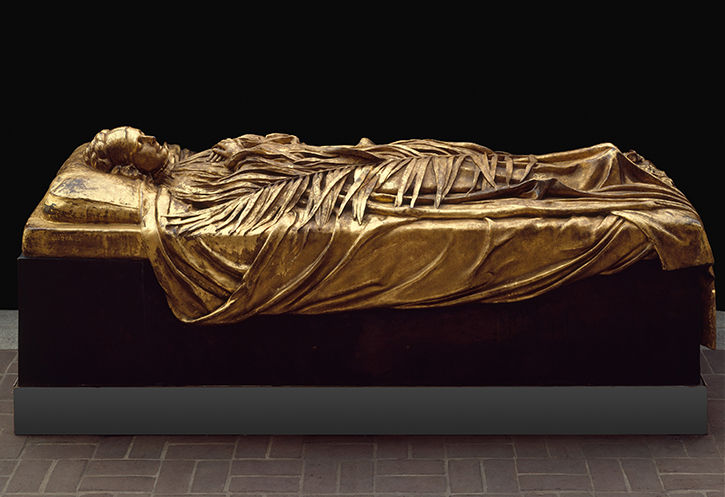Tomb Effigy of Elizabeth Boott Duveneck

Frank Duveneck (American, 1848–1919). Tomb Effigy of Elizabeth Boott Duveneck, 1891; this cast, 1927. Gilt Bronze. The Metropolitan Museum of Art, New York, Rogers Fund, 1927 (27.64).
After the death of Elizabeth Boott Duveneck (1846–1888), her bereaved husband, the painter Frank Duveneck, modeled a poignant funerary monument reminiscent of Gothic and Renaissance gisant (recumbent) tomb effigies. The figure reclines peacefully, with her arms folded over her chest, in striking contrast to the active, sweeping folds of the drapery. The palm branch stretching along her body symbolizes Christian victory over death and suggests that her sleep is not temporary but eternal. The original bronze sculpture is in the Cimitero Evangelico degli Allori, the Protestant cemetery on the outskirts of Florence.
"There's a dichotomy going on: the calm facial features compared with the agitated drapery."
—Thayer Tolles, curator
"Her face, although classic and serene, there's definitely a sense of individual features."
—Thayer Tolles, curator
"I tried to capture in the music the feeling that she evokes: peaceful, bittersweet, a memory of an enjoyed life."
—Joan Jeanrenaud, cellist and composer
All voices: Thayer Tolles, curator; Jackie Terrassa, educator; Joan Jeanrenaud, cellist and composer
Transcript: Motion Drapes a Body at Rest (Video)